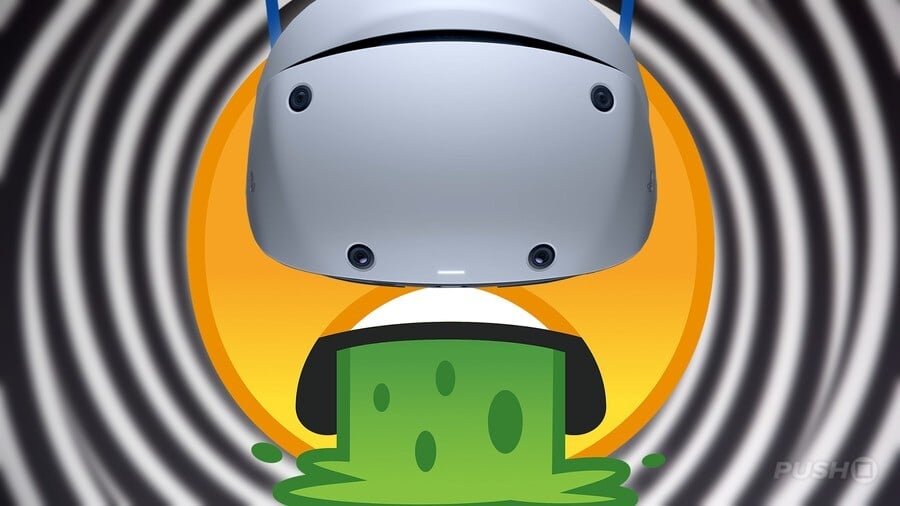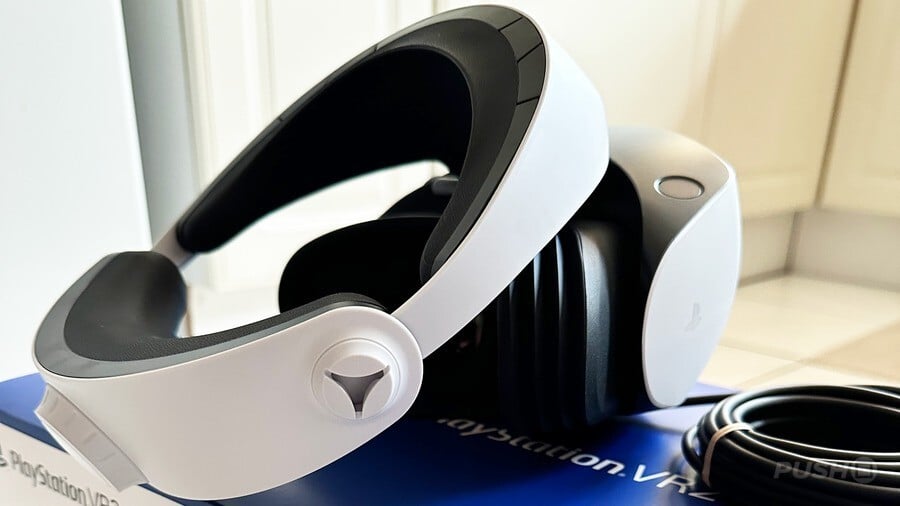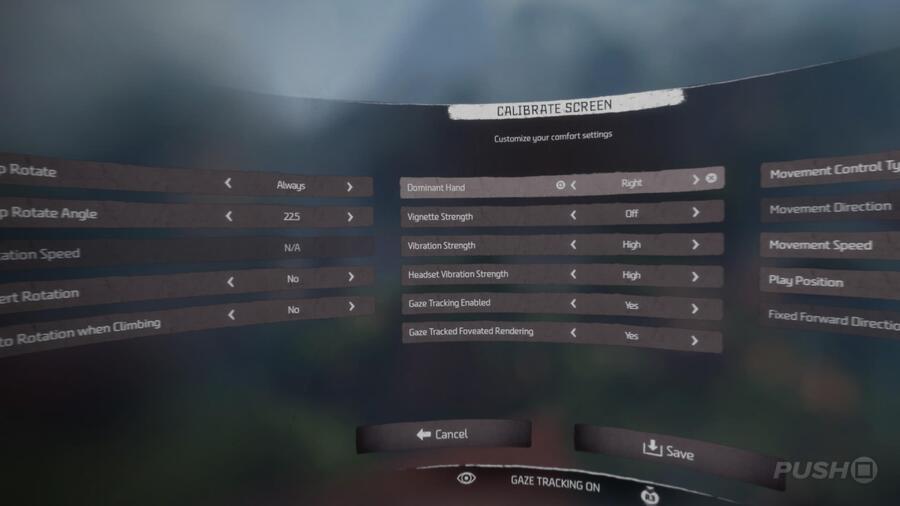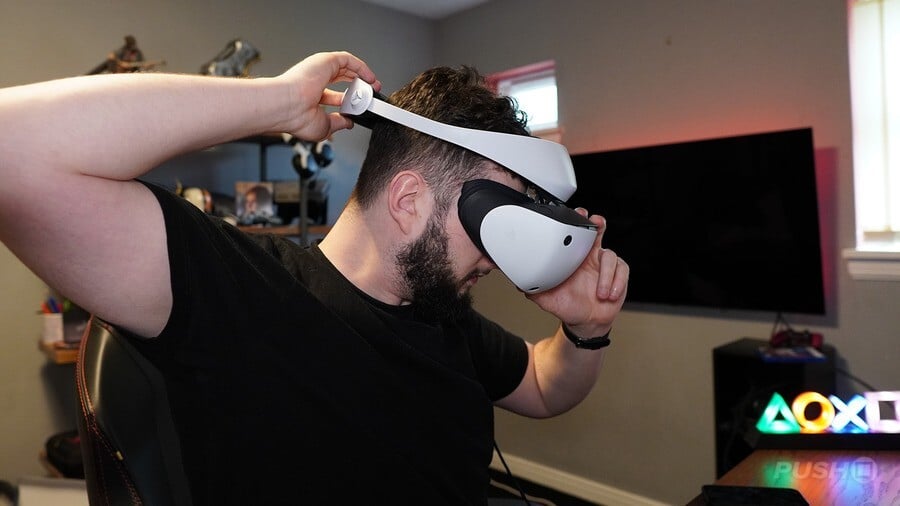
Looking to learn how to reduce motion sickness with PSVR2? Motion sickness relates to the sensation of queasiness and dizziness, and is more common when playing virtual reality due to the disconnect between what you're experiencing and the lack of physical feedback. While motion sickness triggers are extremely subjective, there are some steps you can take to relieve the discomfort. As part of our PSVR2 guide, we're going to explain how to reduce motion sickness.
PSVR2: How to Reduce Motion Sickness
Motion sickness will affect everyone who uses PSVR2 in different ways, and unfortunately to varying extremes as well. As such, there are no hard and fast rules for eliminating the sensation entirely. However, the tips on this page should at least help you to mitigate the issues.
Subscribe to Push Square on YouTube166k
Take a Break As Soon As It Starts

Some virtual reality veterans will tell you to persevere through motion sickness in order to get, what's colloquially known as, your "VR legs". While you can gradually build up a resistance and tolerance to motion sickness, we'd recommend taking a break as soon as you begin to feel the onset of queasiness or dizziness. The reality is that taking off the headset and resetting for 15 to 30 minutes is all you'll need to recover, and then you can get straight back to playing again.
In our opinion, the worst thing you can do is keep playing when you're starting to feel unwell. Once you begin to experience the pangs of motion sickness, the reality is it's not going to improve until you take your headset off. If you're particularly susceptible, then we'd recommend planning out your play sessions in advance; set aside time to complete just one or two levels, and commit to taking off the headset once you're done. As you do build up a tolerance, you'll slowly be able to extend those play sessions. Be sensible, though: a small bout of motion sickness won't take long to recover from, but if you persevere you could be feeling unwell for the entire day.
Check Every Game's Comfort Options

Developers are much more experienced at creating virtual reality content these days, and most will include a variety of comfort options to make gameplay as accessible as possible. Some of the most common toggles you should look for are snap turning, which rotates your viewpoint in increments, and teleportation. While the latter can feel less immersive than traditional first-person controls, it's unquestionably more comfortable warping to a particular point than manually walking there.
You should also pay attention to options like vignettes, which create borders around your peripheral vision to reduce the intensity of movement. And, if you're really struggling, consider disabling things like screen shake. To be honest, we'd suggest starting a new game with all of the comfort options enabled, and then slowly disabling the ones you don't need as you progress. It's better to take this approach than going gung-ho into a new game with all of the accessibility options off, and ending up feeling sick.
Try Some Less Intense Games

If you're new to virtual reality, or you're getting sick quickly, reconsider the games you're playing. High-octane first-person experiences, no matter how many comfort options they offer, are going to trigger you faster and harder than slower, calmer titles. Games like Moss and Job Simulator are great, low impact virtual reality titles, as they're fairly stationary experiences where your body stays in a fixed position.
It's important to underline that these aren't bad games just because they're more comfortable: in fact, they're among the best you can currently buy for PSVR2. Playing these games will help you to steadily build up a tolerance for motion sickness, allowing you to gravitate to more intense titles later. But the same rules as we've outlined above apply here: take a break as soon as you start feeling queasy, as there's no real benefit to pushing through.
Make Sure You're Wearing Your Headset Properly

While it won't necessarily trigger motion sickness on its own, wearing your headset incorrectly won't help. This is because if you're trying to focus on blurry, unclear objects or text, then you're going to cause eye-strain, which will lead to headaches and discomfort. Make sure you're wearing your PSVR2 properly to eliminate this potential issue.
You can find out more information in our How to Wear the Headset Correctly and Comfortably and How to Fix Blurry or Unclear Image Quality guides. Effectively, you're going to want to ensure that you always find the sweet spot on the headset's lenses, and that you don't overtighten the device during the fit. Try to ensure there's no pressure on your forehead or the bridge of your nose, as these things can lead to headaches if you don't get them right. You're looking for a secure but comfortable fit, where the headset stays in place without pinching your head.
Did this guide help you learn how to reduce motion sickness with PSVR2? Share some of your suggestions in the comments section below, and be sure to check out our PSVR2 guide for much more.





Comments 6
Having to jump through all these hoops to try and reduce a feeling of nausea from something that's supposed to be enjoyable?
I have my own foolproof method of avoiding VR motion sickness....I simply don't put on a VR headset in the first place. Can't remember the last time I got motion sickness from sitting in a comfy armchair with a controller and a cuppa.
@JP80 Did it power on for you and not update?
Or would it just not power on? (There's potentially a very simple solution for this one).
I had the PSVR original headset for a about a year or so. Had fun in small doses as I suffered immense motion sickness after playing around 30 minutes at a time. I'm not getting this one due to the fact that it's not worth me getting ill over. The gameplay footage that has been shown over the last few months is amazing though. I hope this is a huge success, gamer wise, I really do. Shame I cannot marvel in all it's wonder, but hey it is what it is, and I'm okay with that. Anyway without me going on about motion sickness and all, I hope all of you who can play this PSVR2 without any motion and all, enjoy the upcoming and present games for this.
What I was most excited about PSVR2 was being able to play sim racing games as I have a sim racing rig with wheel & pedals. Thankfully, I have not experienced any sickness (maybe, a tiny headache only) while playing a full 10-lap race in GT7 (in an extremely fast Super Formula car). This alone has me super excited & hopeful. In PSVR1, the second I hit the accelerator in GT Sport, it felt like my eyes rolled to the back of my head --- not the case here with PSVR2 and GT7.
That said, in Star Wars Edge of the Galaxy demo, the second I stepped foot into the bar and turned around, I got the VR headache.🥴
I might jump in and get Kayak VR to see how it goes.
@JP80 Ah nuts. That's too bad.
I haven't heard about that issue.
The one I had heard about was the power cable issue - It's designed to be replaceable and can come loose in transit, but it's just a matter of pushing it back in.
They're replacing the headset for you at least I assume?
Oof, I'm recovering from having pushed things too far with the Star Wars demo. I figured I would turn off snap-turning, and turn on free move. I felt okay for the first 10 minutes, then took a break to wash dishes. Returned and played maybe 15-20 minutes...and this broke me. That raging hangover-type headache from PSVR1 returned. Laid down and closed my eyes for a good hour, feeling a little better now. Learned my lesson, will take baby steps with free move from here on out...or will stick with snap-turning forever.
Show Comments
Leave A Comment
Hold on there, you need to login to post a comment...